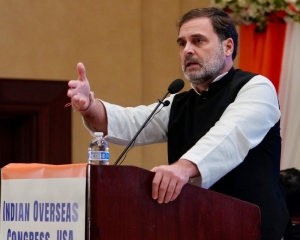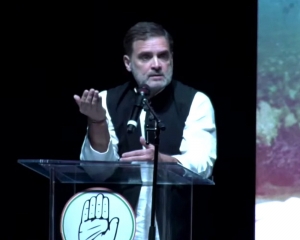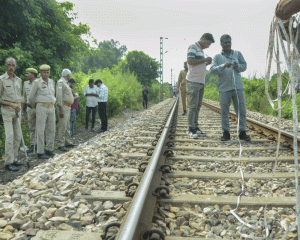Modi Government unveils unified pension scheme to bridge old and new, aiming to satisfy Central and State employees
On August 24, 2024, the Union government announced the new Unified Pension Scheme (UPS) for central government employees. In fact, what looked like a well-orchestrated action plan, on the following day the BJP-led government in Maharashtra approved the implementation of the Scheme for its employees. Madhya Pradesh government is likely to implement the UPS soon. The above announcements are in response to the earlier decisions of Opposition-ruled States, including Rajasthan, Chhattisgarh (before the November 2023 elections), Jharkhand, Himachal Pradesh (HP) and Punjab to revert to the old pension system (OPS) which it felt tilted the electoral pendulum towards those parties, particularly in HP. Fearing a repeat during the upcoming elections and Congress having already announced its intent to revert to OPS in Maharashtra, Modi seems to have gone for a preemptory move. Generally, employees of both the central and State governments who joined service after January 1, 2004, and are covered under the national pension scheme (NPS) have been uncomfortable with it. They have been demanding the restoration of the OPS which opposition-ruled states promised. Now, the Centre and BJP-ruled states have come up with the UPS hoping this will satisfy them. Will it?
Under the OPS, retired employees received 50 per cent of their last drawn salary as a monthly pension. Just as the government offers its employees an adjustment in dearness allowance or DA to offset the increase in the cost of living, the monthly payouts of pensioners also increase to provide for DA. A government employee under OPS could not have got anything better. He was entitled to a decent ‘pre-determined’ monthly amount; the pension was fully protected against inflation and got it as long as he lived. After death, his wife gets the same amount for seven years and thereafter the family pension is around 60 per cent of this amount till she is alive. However, from the perspective of the government, the arrangement could not have been worse.Under OPS, there was an inherent tendency for pension liabilities to balloon due to the addition to the pensioners’ club every year, higher salaries of those joining, inflation indexation, increased longevity and so on. In 1990-91, the Centre’s pension bill was Rs 3,272 crore. By 2020-21, it had jumped 58 times to Rs 190,886 crore. For all states, it shot up from Rs 3,131 crore in 1990-91 to Rs 386,001 crore in 2020-21 or 125 times.
Financial prudence requires that every year, the government set aside capital which together with return accruing thereon would create a growing corpus sufficient to pay for the pension liabilities on a sustainable basis thus avoiding any stress on the budget. But, that was never done. Instead, both the Centre and states have followed what in jargon is known as ‘pay-as-you-go’. This has made the present generation of taxpayers bear the continuously rising burden of pensioners.
To deal with these pitfalls, the then UPA dispensation introduced the NPS for government employees joining service from January 1, 2004. Unlike OPS where the employee doesn’t contribute anything, NPS is a contributory pension scheme under which employees contribute 10 per cent of their salary (Basic + DA). The government also contributes 14 per cent towards the employees’ NPS accounts. The money is invested in multiple investment avenues i.e. equity, government bonds etc where it grows into a sizeable corpus by the time an employee reaches retirement age.On retirement, she is allowed to withdraw 60 per cent of the corpus (this is tax-free), and buy an annuity from the remaining 40 per cent. NPS offers a self-financing and fully funded arrangement for discharging pension liabilities in which the state knows ‘how much it has to contribute’.
There won’t be any major stress on the budget even as the employee gets a good pension depending on the contribution made, the age of joining, the type of investment, and the income accruing from that investment.The NPS is good for the fiscal health of the government. However, from the pensioner’s angle, it doesn’t match the OPS. Modi has brought a new UPS to bridge the gap between the two. Does it?Under UPS, which kicks in from April 1, 2025, employees who joined the service after January 1, 2004, and have worked for 25 years or more, after retirement, will be given 50 per cent of their basic average salary of the last 12 months as pension every month. However, employees who have served less than 25 years will get proportionately less or Rs. 10,000 per month minimum pension to employees who have served for a minimum of 10 years.If an employee dies on or before retirement, then the husband or wife will be given a pension, but the pension amount will be 60 per cent of the pension received by the employee immediately before her or his demise.
Employees who have already retired or retiring on or before 31 March 2025, with arrears, will be eligible under UPS.The Scheme offers an adjustment in DA on assured pension, assured family pension and assured minimum pension. The DA will be calculated based on the All India Consumer Price Index for Industrial Workers (AICPI-IW) as in the case of service employees.How will the government fund it?It will build a pension corpus out of the employee contribution of 10 per cent (of basic pay plus DA) and the government’s contribution of 18.5 per cent. The pension corpus will be divided into two portions: an individual pension fund (IPF) to which the employee’s contribution of 10 per cent and matching government contribution will be credited; and a pool corpus created out of the remaining 8.5 per cent contribution of the government.
The employee can exercise an investment choice for the IPF alone.The employees looking for higher pensions will have the option to get their pension monies (from IPF alone) invested in high-risk instruments for better returns. However, they will have to forego the UPS guarantees viz. monthly pension payouts of 50 per cent of the final service year’s monthly pay, with full inflation adjustment. UPS guarantees will only be for those who opt for the “default investment option” which means an employee should leave it entirely to the government to manage the IPF besides the ‘pool corpus’. the former has anyway no claim. Needless to say, the ‘pool corpus’ will be used to make up for the shortfall in the returns generated from the investment of the IPF to ensure a 50 per cent pension.
Under UPS, there is no provision for the return of capital to the heirs of the pensioner in the event of her death. This makes perfect sense as one can’t have the cake and eat it too. The shift to UPS is a good move. It gives what the OPS gave even while preserving the good features of NPS like self-financing for discharging pension liabilities. It puts a little extra burden on the taxpayers being the extra 4.5 per cent of the government’s contribution (18.5 per cent under UPS against 14 per cent under NPS). One wonders whether this will fully satisfy the employees. The answer is ‘Yes’ if they see reason. It will be ‘No’ if they don’t. For instance, they could still argue under OPS, they were getting a 50 per cent pension without having to contribute even a Rupee whereas under UPS, an employee has to contribute 10 per cent of basic pay plus DA every month.
(The writer is a policy analyst; views are personal)



















